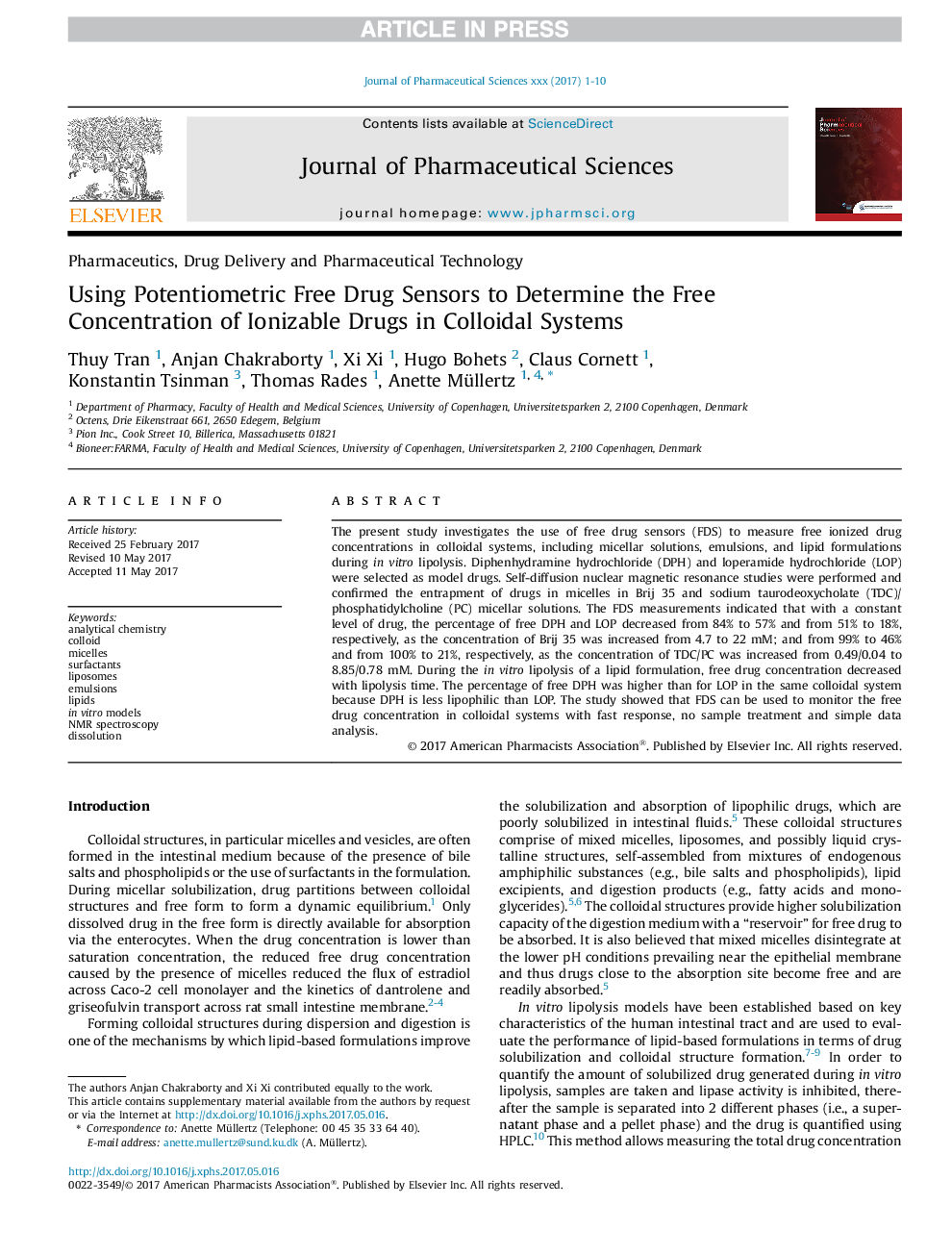| Article ID | Journal | Published Year | Pages | File Type |
|---|---|---|---|---|
| 8513556 | Journal of Pharmaceutical Sciences | 2018 | 10 Pages |
Abstract
The present study investigates the use of free drug sensors (FDS) to measure free ionized drug concentrations in colloidal systems, including micellar solutions, emulsions, and lipid formulations during in vitro lipolysis. Diphenhydramine hydrochloride (DPH) and loperamide hydrochloride (LOP) were selected as model drugs. Self-diffusion nuclear magnetic resonance studies were performed and confirmed the entrapment of drugs in micelles in Brij 35 and sodium taurodeoxycholate (TDC)/phosphatidylcholine (PC) micellar solutions. The FDS measurements indicated that with a constant level of drug, the percentage of free DPH and LOP decreased from 84% to 57% and from 51% to 18%, respectively, as the concentration of Brij 35 was increased from 4.7 to 22 mM; and from 99% to 46% and from 100% to 21%, respectively, as the concentration of TDC/PC was increased from 0.49/0.04 to 8.85/0.78 mM. During the in vitro lipolysis of a lipid formulation, free drug concentration decreased with lipolysis time. The percentage of free DPH was higher than for LOP in the same colloidal system because DPH is less lipophilic than LOP. The study showed that FDS can be used to monitor the free drug concentration in colloidal systems with fast response, no sample treatment and simple data analysis.
Keywords
Related Topics
Health Sciences
Pharmacology, Toxicology and Pharmaceutical Science
Drug Discovery
Authors
Thuy Tran, Anjan Chakraborty, Xi Xi, Hugo Bohets, Claus Cornett, Konstantin Tsinman, Thomas Rades, Anette Müllertz,
